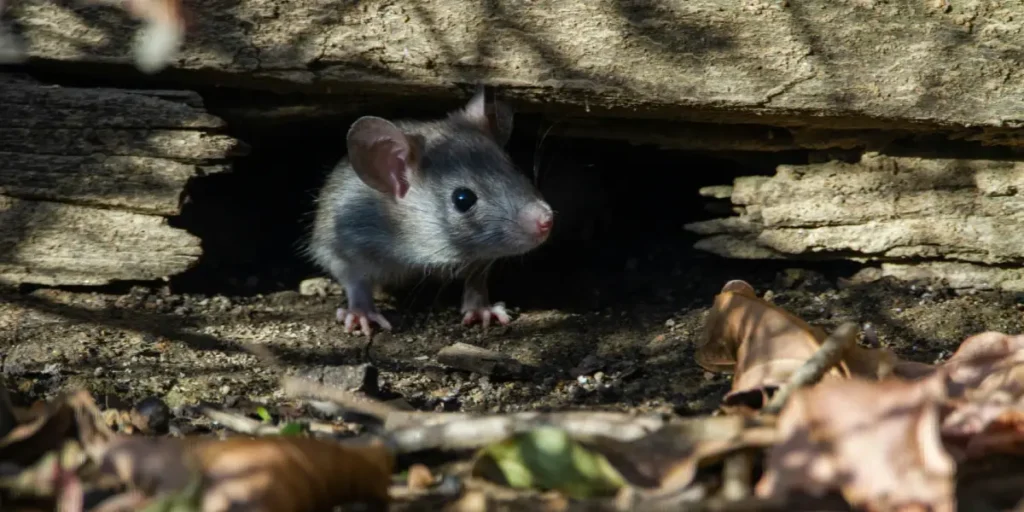Table of Contents
Subway rats, a vibrant society of people living in the shadowy, echoing tunnels of the subway system, are the inhabitants of this hidden realm. These hardy beings, who are frequently looked upon with revulsion and terror, have made a home for themselves in the busy subterranean world that lies beneath our feet. Their presence makes us wonder about their life, how they affect us, and how we coexist. It also makes us feel a little nervous. We go inside the hidden world of subway rats in this blog article, debunking myths, uncovering their hidden lives, and appreciating the complexity of their way of life.
The Secret Lives of Subway Rats
The Urban Ecosystem of Subway Rats
The subway system offers a distinct and difficult environment with its complex network of tunnels, platforms, and tracks. Subway rats, however, have adjusted to this urban environment rather well. They do well in the dark and move easily through the maze-like passageways. Their daily existence is characterized by the incessant hum of trains, flickering lights, and endless human activity.
Because of the constant flow of people and the inevitable spills and crumbs they leave behind, food is plentiful on the subway. Rats are opportunistic feeders that will eat anything, including insects, other rodents, and leftover food scraps. They have also figured out how to take advantage of the subway’s trash disposal system, feeding on the debris that builds up in the tunnels.
Nesting places abound in the dark recesses of the underground. Rats use materials like paper, cloth, and insulation to make their nests under platforms, behind walls, and in abandoned tunnels. These nests offer a safe place for the birds to raise their young while also offering protection from the weather and predators.
As gregarious creatures, subway rats reside in colonies with intricate social structures. They use body language, scent markers, and vocalizations to communicate. A rat colony’s social structure makes sure that members work together to acquire food, protect territory, and raise young.
Understanding Rat Behavior in the Subway
Primarily nocturnal, subway rats come out of hiding during the night to scavenge for food and investigate their new home. They can easily climb walls and squeeze through tight spaces because they are quick climbers and jumpers. They can navigate the poorly lighted tunnels and stay out of harm’s way thanks to their acute senses of smell, hearing, and touch.
Rats are extremely resourceful and adaptive. They have mastered the art of taking advantage of the subway’s physical features, moving around unnoticed by utilizing electrical and ventilation ducts as thoroughfares. Additionally, they pick things up quickly and may modify their behavior to fit changes in their surroundings. For instance, they might change the way they forage to avoid regions where pesticides have been used.
Humans and subway rats will inevitably interact. Although most interactions are brief and uneventful, rats may turn hostile if they sense being cornered or threatened. It’s critical to keep a safe distance and refrain from upsetting them. Along with other creatures in the underground, subway rats also socialize with mice, pigeons, and cockroaches. Depending on the situation, these exchanges might be cooperative or competitive.

The Hidden World of Subway Rats: Myths vs. Reality
Fear and sensationalism drive many myths and misconceptions about subway rats. One widespread misconception is that they are violent and prone to attacking others. Subway rats are actually shy and want to stay out of conflict. Rather than attacking people, they are more prone to run away from them. They might, however, bite in self-defense if they sense being cornered or attacked.
The idea that subway rats are highly smart is another fallacy. Their intellect is frequently overstated, despite the fact that they are undoubtedly resourceful and adaptive. Instinct and ingrained behavior, not sophisticated reasoning or problem-solving abilities, are what motivate them.
The idea that subway rats are disease-ridden and seriously dangerous to people’s health is arguably the most widespread. Although rats are known to carry some diseases, there is very little chance that these illnesses will spread to people. Leptospirosis, salmonellosis, and hantavirus are the most prevalent illnesses linked to rats. Rat bites or contact with contaminated rats’ urine or feces are the usual ways in which these illnesses are transmitted.
It’s critical to distinguish reality from myth if you want to live in harmony with subway rats. We can approach them with perspective and reduce any potential risks by taking the necessary precautions when we are aware of their genuine nature and behavior.
The Impact of Subway Rats on Human Life
Subway rats are interesting animals in and of themselves, but their existence in the system can seriously affect people’s quality of life. The possible health dangers they present are among the main issues. As was previously noted, diseases that can infect people can be carried by rats. Even with the low danger of transmission, it’s crucial to take preventative measures to keep your hands away from rat feces and urine.
Subway systems may experience economic consequences due to rat infestations. By chewing on wires and cables, rats can harm infrastructure, resulting in costly repairs and service interruptions. They may also provide unhygienic conditions and taint food supplies, which may lead to fines and lost income.
It’s important to recognize the psychological effects of seeing rats in the train. Rats are viewed as disgusting and scary by many, and their presence can cause anxiety and even panic attacks. This may have a detrimental effect on passengers’ entire experience and discourage some from taking the subway altogether.
Coexisting with Subway Rats: Effective Control and Prevention
Rat population control in the subway is a difficult and continuous task. There are limits to the effectiveness of traditional pest management techniques like using pesticides and traps. Poisons can endanger people and pets, while indiscriminate traps can catch non-target animals.
Rat management techniques that are sustainable and compassionate have gained more attention in recent years. Instead of only responding to infestations, some techniques aim to prevent them. Several successful tactics consist of:
- Sanitation: Rat infestations can be avoided in the subway by keeping the area tidy and hygienic. This entails routinely cleaning the tracks, platforms, and tunnels in addition to disposing of food waste properly.
- Exclusion: Rats can’t get into the subway system if gaps and fractures in the walls and flooring are sealed up.
- Habitat modification: Rats may be disinclined to frequent the subway if there is less food and shelter available. This can be accomplished by tying up trash cans, clearing off clutter, and cutting back trees near subway entrances.
- Public education: Rat populations can be decreased by educating the public about the value of appropriate waste management and other preventive measures.
Living with subway rats necessitates a multifaceted strategy that includes cooperation, public education, and efficient control techniques. Together, we can build a subway environment that is friendly and safe for both people and rats.
Conclusion
Subway rat culture is a complicated and interesting hidden world. These hardy critters have made a home for themselves in the busy subterranean world beneath our feet by adapting to survive in a demanding metropolitan setting. It is crucial to keep in mind that, like any other living thing, they are only trying to survive, despite the fact that some people may find them repulsive and frightening.
We can debunk myths and prejudices about subway rats and treat them with respect and understanding if we are aware of their secret life. Additionally, we can take action to reduce any dangers they might cause to the health and welfare of people. Living with subway rats necessitates a multifaceted strategy that includes cooperation, public education, and efficient control techniques. Together, we can make the subway a secure and friendly place for everyone to go.

FAQs about Subway Rats
Are subway rats dangerous?
In general, subway rats pose no threat to people. Rather than attacking people, they are more prone to run away from them. They might, however, bite in self-defense if they sense being cornered or attacked. It’s critical to keep a safe distance and refrain from upsetting them.
How do subway rats survive?
People who live in subways are very adaptive and resourceful. They have mastered the art of taking advantage of the subway’s physical features, moving around unnoticed by utilizing electrical and ventilation ducts as thoroughfares. Additionally, they are opportunistic feeders, taking in anything from insects to other rodents to leftover food scraps.
What diseases do subway rats carry?
Numerous illnesses, such as hantavirus, salmonellosis, and leptospirosis, can be transmitted by rats. Rat bites or contact with contaminated rats’ urine or feces are the usual ways in which these illnesses are transmitted. Even if there is not much chance of transmission to people, it is nevertheless advisable to take safety measures to keep your hands away from rat urine and droppings.
How can we control the subway rat population?
A multifaceted strategy including cooperative efforts, public education, and efficient control techniques is needed to manage the subway rat population. Sanitation, exclusion, habitat alteration, and public education are a few successful tactics.
Are there any benefits to having rats in the subway?
Rats can be beneficial to the urban ecosystem even though they are frequently thought of as pests. In addition to serving as scavengers and clearing away trash and food waste, they aid in the management of bug populations.
What can I do if I see a rat in the subway?
It’s best to just stay away from rats in the train if you notice them. Never try to feed it or touch it. You can report a rat infestation to the subway officials if you’re worried about it.
Are subway rats different from other rats?
Typically, brown rats (Rattus norvegicus), the most prevalent rat species in urban areas worldwide, are used as subway rats. They have adapted to survive in the particular conditions of the subway system, but they are essentially no different from regular brown rats.
How do subway rats affect the subway system?
By chewing on wires and cables, subway rats can harm infrastructure, resulting in costly repairs and service interruptions. They may also produce unhygienic conditions and pollute food sources.
Can subway rats be eradicated completely?
Complete eradication of subway rats is improbable. Nonetheless, by using sensible management techniques, their populations can be kept under control.
What is the future of subway rats?
Subway rats will probably exist as long as there are subways. They are a hardy and versatile species that have adapted to living in cities. Finding strategies for peaceful coexistence with them while reducing any threats they might present is our challenge.
Additional Topics to Consider
Subway rat culture is a complex and multidimensional subject with a wealth of uncharted territory. The following are some more subjects that could be covered in upcoming articles or blog posts:
- The history of rats in subways: How did rats get into the subway system in the first place? What are the long-term changes in their populations?
- The role of rats in urban ecosystems: What function do rats serve ecologically in cities? And how do they deal with other animals?
- The ethical considerations of rat control: What moral ramifications result from controlling rat populations with poisons and traps? Exist any more compassionate options?
- The cultural significance of rats in different societies: What attitudes do many civilizations around the world have about rats? What part do they play in mythology and folklore?
- The future of human-rat interactions in urban environments: In the future, how will our connection with rats change? What steps can we take to foster a more peaceful cohabitation?
Call to Action
Subway rats inhabit a fascinating and intricate secret world that merits our knowledge and consideration. We may debunk myths and prejudices about these species and treat them with respect by learning more about them and their hidden lives. Additionally, we can take action to reduce any dangers they might cause to the health and welfare of people.
I urge you to conduct more research and look through the various materials accessible online and in libraries if you’re interested in knowing more about subway rats or urban animals in general. You can also leave a comment below with your ideas and experiences with subway rats. Together, let’s carry on the discussion and establish a more peaceful coexistence with these amazing animals.
I appreciate you taking the time to read! Please think about forwarding this blog article to your friends and family if you find it interesting and educational. Remember to subscribe to our blog as well for more enlightening perspectives on the natural world.



